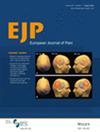Association Between Interoceptive Accuracy and Pain Perception: Insights From Trained Musicians and Athletes
Abstract
Background
The integration of concurrent endogenous and exogenous multisensory information throughout years of dedicated sensorimotor training is associated with enhanced interoceptive accuracy and altered pain perception in healthy individuals. However, this relationship remains inconclusive, with outcomes varying by training modality and pain stimulus. This study examines associations between distinct forms of sensorimotor training, interoception and pain perception.
Methods
Two groups of individuals performing extensive sensorimotor training, 17 musicians and 15 athletes, and 14 non-musicians/athletes were recruited. Participants completed a cardiac interoceptive accuracy (IAcc) task and quantitative sensory tests, including mechanical and electrical detection thresholds (MDTs and EDTs), pressure and heat pain thresholds (PPTs and HPTs), as well as music-related perceptual discrimination and self-reported physical activity assessments.
Results
Results revealed superior IAcc and PPTs in athletes compared to controls. Musicians exhibited increased heat pain sensitivity. While IAcc in musicians did not reach significance, training duration significantly predicted IAcc across both groups. PPTs correlated positively with both IAcc and accumulated training, but mediation analyses revealed that training effects on PPTs occurred independently of IAcc, suggesting distinct pathways for interoception and pain modulation. Additionally, physical activity levels correlated positively with both IAcc and PPTs across participants.
Conclusions
These findings support the emerging view that individuals engaging in sensorimotor training routines, which require embodied multisensory integration for optimal performance, enhance interoceptive accuracy. They also confirm that pain processing varies by training modality. Furthermore, they suggest that the type of acute pain stimulus may explain inconsistencies in the interoception–pain relationship in healthy populations.
Significance Statement
This study advances our understanding of the interoception–pain-training nexus by revealing two distinct pathways: one linking sensorimotor training, interoceptive accuracy and pressure pain perception and another showing that accumulated sensorimotor training independently elevates pain thresholds. By differentiating between pain modalities, the findings contribute to resolving previous contradictory results, refine our insights into interoception in healthy populations and inform about potential clinical interventions.


 求助内容:
求助内容: 应助结果提醒方式:
应助结果提醒方式:


